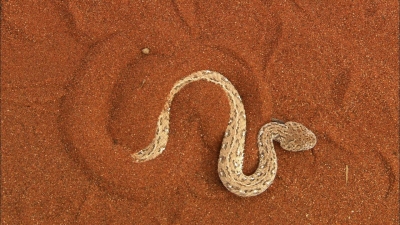
The Sidewinder is a venomous pit viper snake species found in the desertic regions of the southwestern United States and northwestern Mexico. In the US they are found in desert regions of eastern California, southwestern Utah, southern Nevada, and western Arizona, and in Mexico, it’s found in western Sonora and eastern Baja California.
?
They belong to the genus Crotalus, that of rattlesnakes and 3 subspecies are currently recognized by scientists. They are also known by other common names like the horned rattlesnake, sidewinder rattlesnake or sidewinder rattler.
The sidewinder inhabits mostly with wind-blown sands, particularly where sand hummocks are topped with vegetation. But they are also found in areas with open terrain which enables their side winding locomotion like open flats, hardpan, and rocky hillsides, and other arid areas usually with creosote bush growth.
Their most common name, sidewinder, comes from the snake’s unusual form of locomotion, which enhances traction and makes possible its movement on loose windblown desert sand.
However this peculiar locomotion is used by the sidewinder on any substrate and as the snake progresses over the loose sand it leaves a J-shaped impression, with the tip pointing in the direction of travel.
This is a small rattlesnake species, on average adult specimen’s measures between 17 and 30 inches (43 to 76 cm) in length, males are smaller than the females, which is unusual for this type of snakes.
Picture Credit : Google




